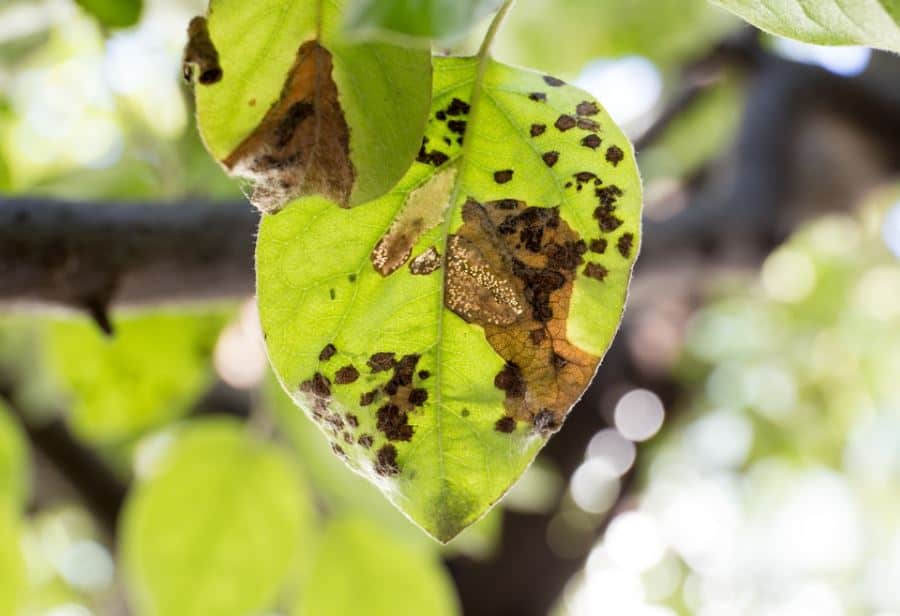Quince is a deciduous shrub with brightly colored blooms that is simple to cultivate. Many believe that certain types’ outstanding thorn growth is its biggest problem. But in addition to fireblight and scab, the plant is also afflicted by a few fungus-related illnesses. Scales and mites are also cited as pests that affect quince, and it is especially subject to aphids. Continue reading to learn more about the typical ailments and vermin that affect blooming quince.

Flowering Quince
Flowering quince (Chaenomeles speciosa), a thick, rounded, deciduous shrub, may reach a massive wall-like height of 10 feet by 10 feet (3 meters). The plant, native to China and Tibet, features five-petaled crimson blooms, sometimes pink or white, and prickly stems that tangle readily. These are eye-catching because they illuminate the tree when its leaves are still naked in the spring.
The edible fruits produced by flowering quince evolved into the plant’s scientific name. The Greek words chaino, which means to gape, and melon, which means an apple, combine to form its genus name, Chaenomeles. This was predicated on the false notion that ripe fruits split open.
The fruits taste harsh and are hard immediately off the tree. When made into jams and jellies, they develop into a delectable delicacy. The leaves of the blooming quince are lovely; they are a deep, glossy, forest green with delicately serrated margins.
Quince Flower Diseases
Although quince isn’t more prone to issues than any other shrub, fungal quince infections may cause the plant to lose its leaves. Leaf fungus may be problematic, particularly in the spring when it rains a lot. Additionally, fungi-related ailments like apple scabs, cedar-quince rust, and wood rots make it challenging for gardeners to work in moist places.
Scab and fire blight (produced by bacteria), two other diseases of flowering quince, are present. Observe any regions of dead bark on branches, twigs, or trunks for watery, light tan ooze that fire blight cankers may release, Plus scab.
However, don’t let it keep you up at night worrying. Flowering quince trees are largely indestructible and often survive without suffering too much harm. They can withstand heat and cold but thrive in regions with direct sunlight.
Quince Flower Pests
Pest insects are another category. Aphids are soft-bodied pests with sucking mouth parts that feed on plant leaf fluids; any gardener worth their salt can identify them. These don’t often become major pests, but when it comes to quince, they may seriously harm young growth. Scale and mites are less bothersome insect pests.
Environmental problems may also sometimes ruin a blossoming quince’s tranquil existence. For instance, your plant can get chlorosis and become yellow if the soil where the quince is grown has a high pH. Frosts in the early spring may harm or even kill buds. Additionally, the quince’s growth, development, and attractiveness may be harmed by too little or too much soil moisture.


